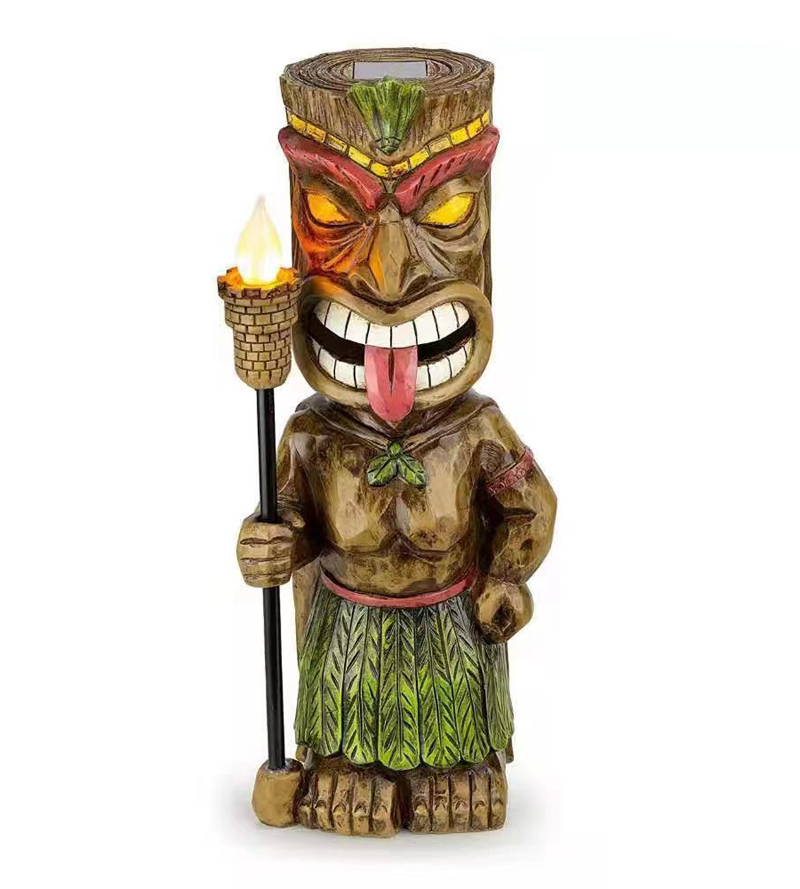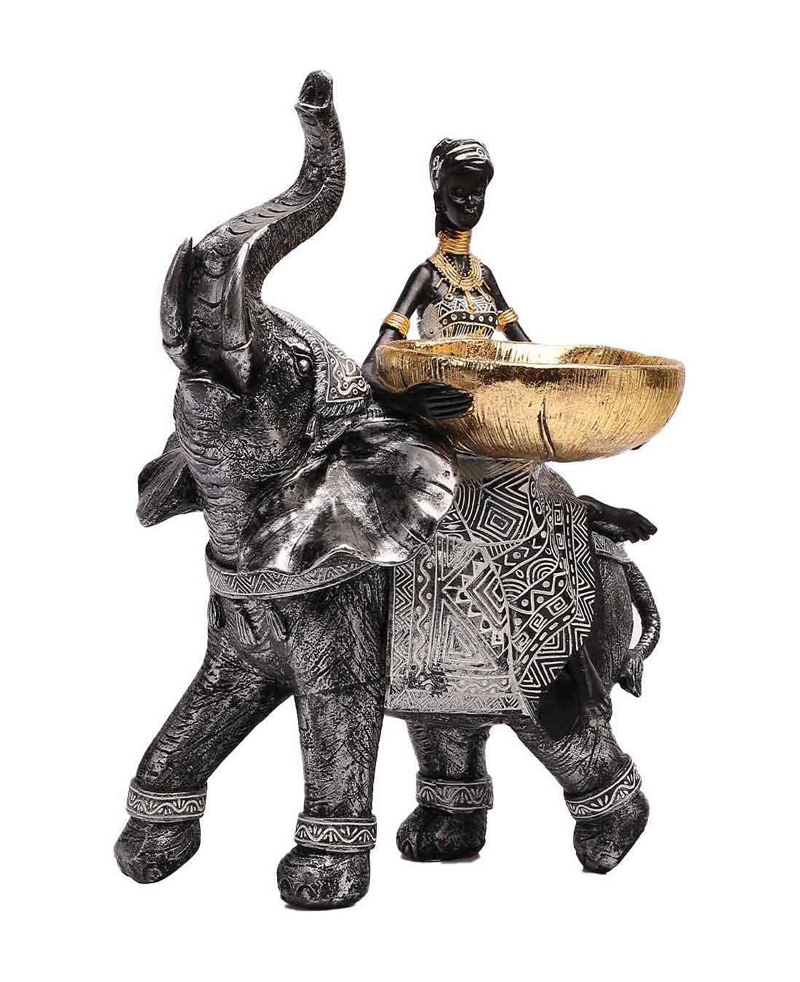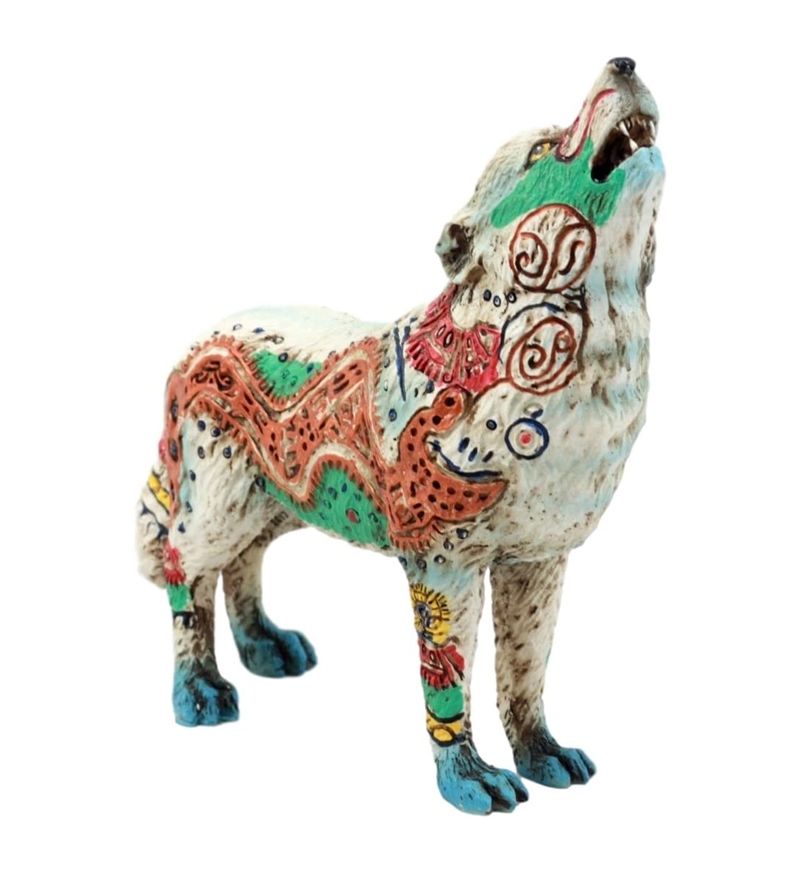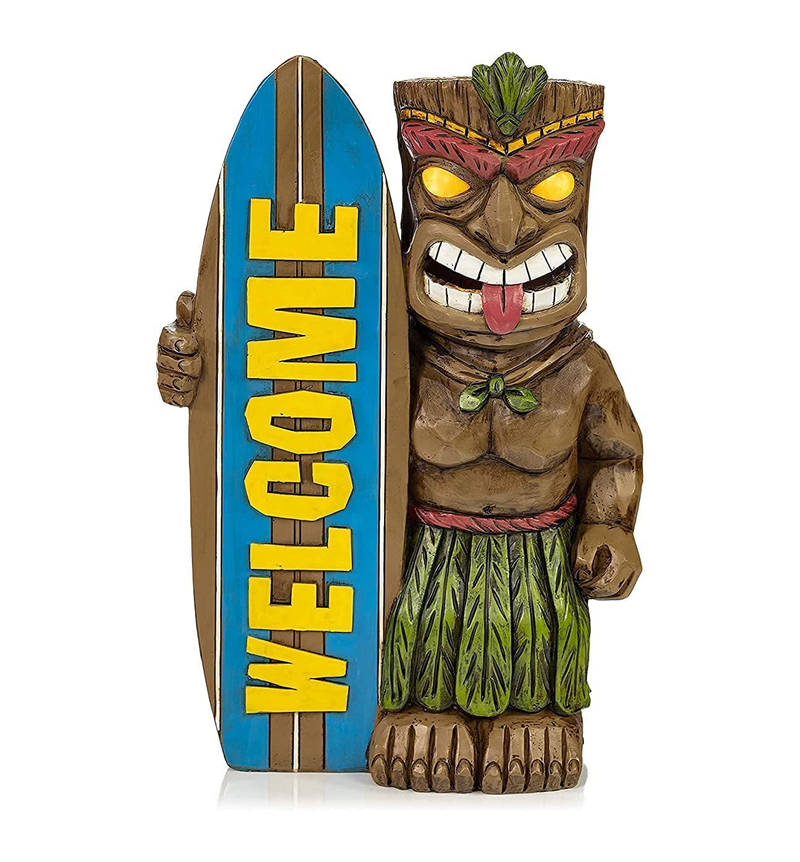Tiki Guard Totem Solar Powered Statue
Tiki Guard Totem Statue automatically illuminates by LED. There is a solar panel on Tiki’s head that can absorb solar energy to reserve electricity. During the day, the solar panel collects the sun’s energy and converts it into electrical power that is stored in the rechargeable battery. At night, the light-sensing technology automatically illuminates the solar fixture. Light will flicker like flames. Tiki will protect your courtyard like a guard! Hand-cast using real crushed stone bonded with durable designer resin, this Tiki Statue is topped with sun-resistant, full-color paint. The Tiki is part of a belief that is based on a typically Polynesian Spiritual Concept. Originating from the Marquesas Islands, this spirituality is spread throughout Oceania through the personification in the forms of statues in lava rock, wood and even human bones. These representations are present in different forms, considered heritage of oceanic art, such as jewels and tattoos with still mystical meanings. Some of these representations are faces with large round eyes engraved and painted on stones, some even representative of the Maori Gods. The term Tiki can be translated simply as “effigy” and refers precisely to the “image of something“, often the embodiment of large carvings and stone artifacts of volcanic origin, which portray typical humanoid forms. According to Polynesian legends, there is a spirit in every Tiki. The carvings often serve to mark the boundaries of sacred or significant places.
Tikis were also phallus figurines that women hung around their necks as a ward against infertility. Over the centuries this ancient culture has been dispersed and influenced by the colonization of the first explorers and the attempt to convert the native inhabitants by missionaries from the new world, enveloping ancient traditions and spiritual representations in mysticism. We owe much of the knowledge of these cultures to the interest of the first great explorers who, driven by their vocation for exploration and knowledge, meticulously described these primitive cultures, but also to the inspiration of numerous artists and writers of the old world, who, one above all Gauguin, fascinated by the heavenly and oceanic environments, by human life in symbiosis with the naturalness of the oceanic islands, they reproduced and described the “Tiki Culture” in their works. But the spirituality of the Tiki re-emerges after about 2500 years in American Culture, with the birth of the exotic mixing of Don the Beachcomber. In particular, the use of Tiki Mugs after the 1950s was intended to entertain and amaze the clientele of exotic locales through the re-enactment of ancient Polynesian mysticism. All this has contributed to reactivating a great attention and research also for the ancient populations of the Tiki. Tiki Guard Totem Solar Powered Statue measures: 2.5 inches / 6 cm x 1.5 inches / 4 cm x 6.5 inches / 17 cm.
Tiki Guard Totem Statue on Amazon.
Tiki Guard Totem Statue on eBay.
Tiki Statues and Totem Statues.







You must be logged in to post a comment.